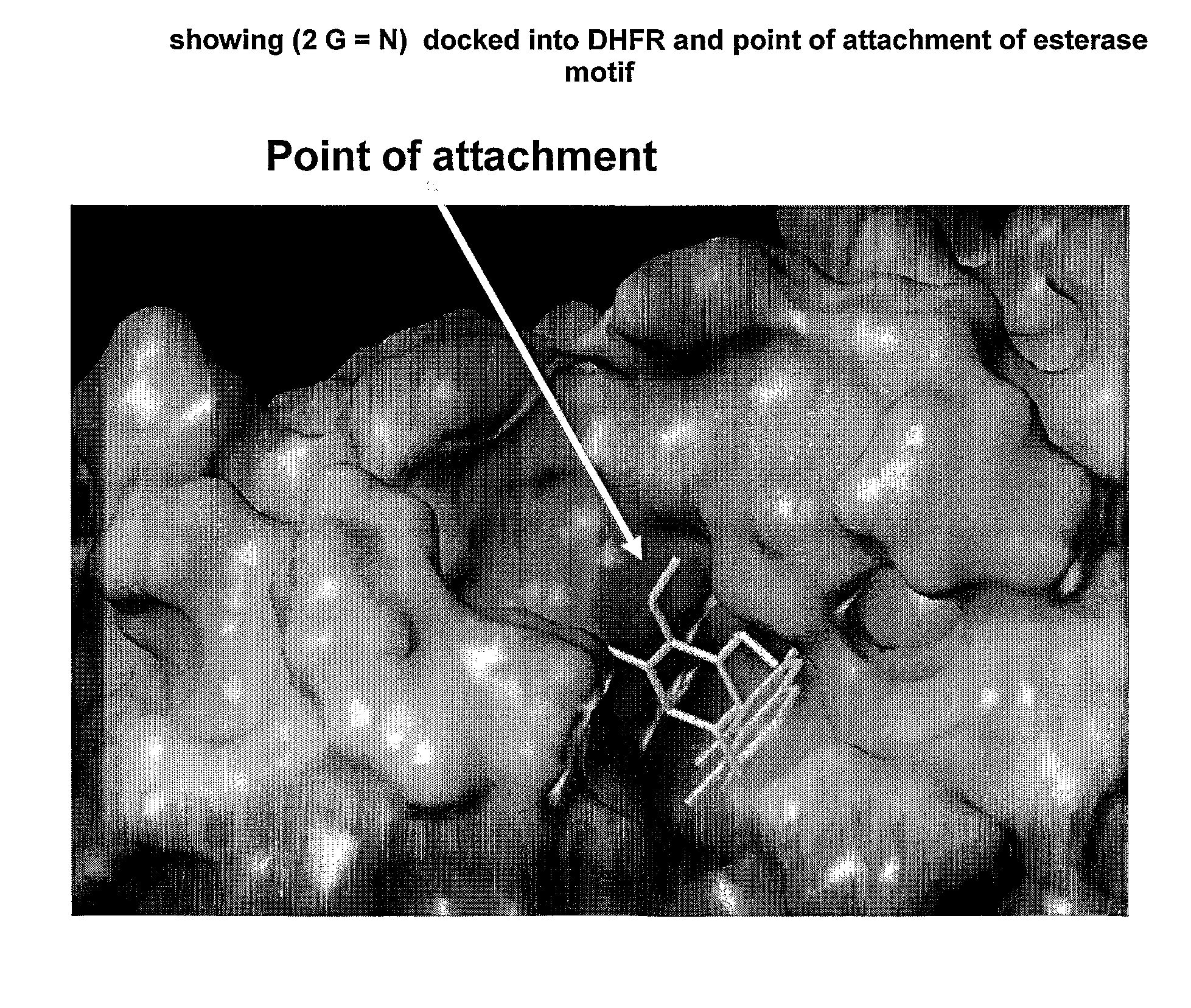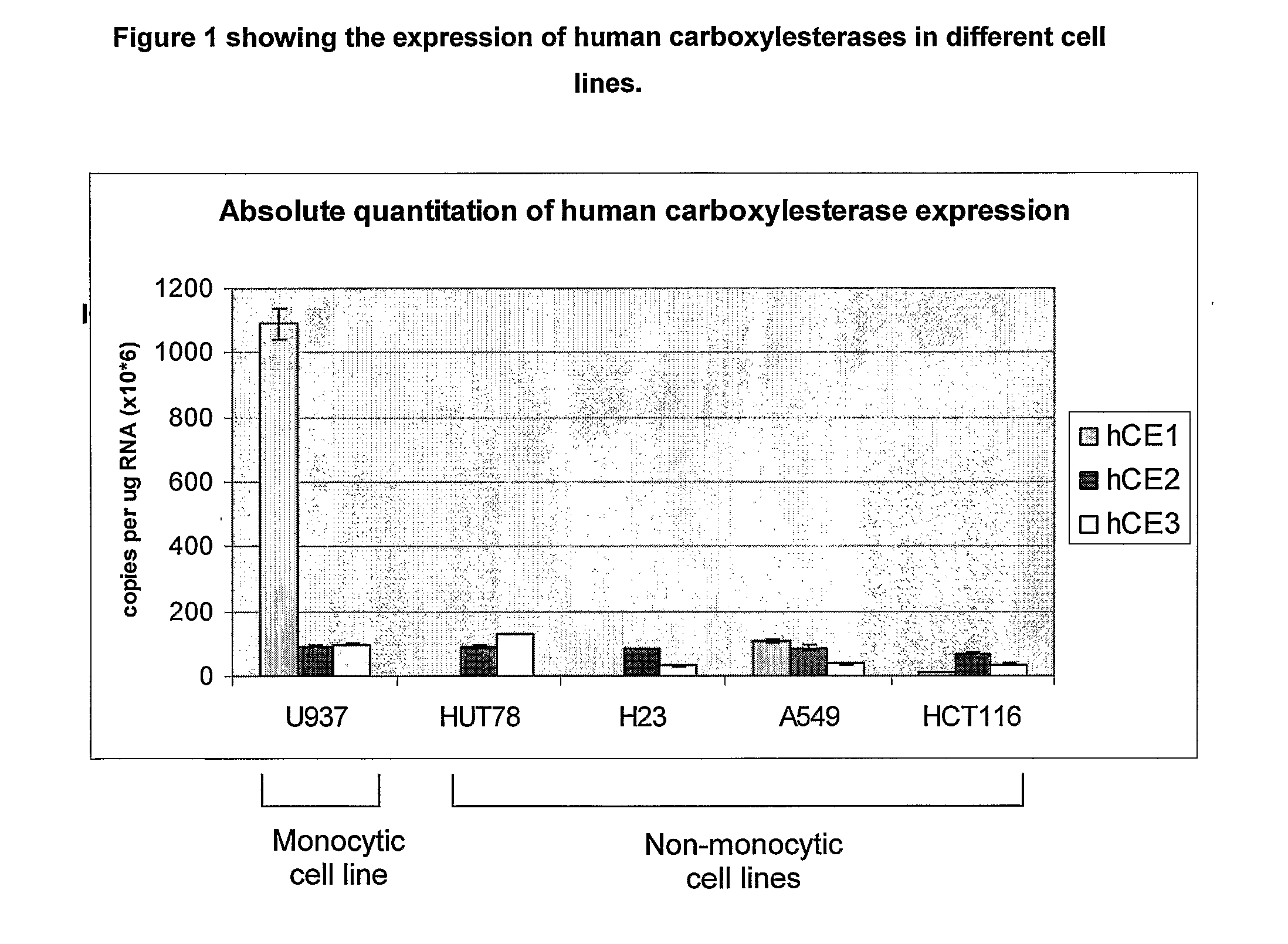Enzyme and Receptor Modulation
a technology applied in the field of enzymes and receptors modulation, can solve the problems of poor potency of modulators, and achieve the effect of prolonging and/or increasing activity
- Summary
- Abstract
- Description
- Claims
- Application Information
AI Technical Summary
Benefits of technology
Problems solved by technology
Method used
Image
Examples
example a
[0077]Folic (pteroylglutamic) acid is a vitamin which is a key component in the biosynthesis of purine and pyrimidine nucleotides. Following absorption dietary folate is reduced to dihydrofolate and then further reduced to tetrahydrofolate by the enzyme dihydrofolate reductase (DHFR). Inhibition of DHFR leads to a reduction in nucleotide biosynthesis resulting in inhibition of DNA biosynthesis and reduced cell division. DHFR inhibitors are widely used in the treatment of cancer (Bertino J, J. Cin. Oncol. 11, 5-14, 1993), cell proliferative diseases such as rheumatoid arthritis (Cronstein N., Pharmacol. Rev. 57, 163-1723), psoriasis and transplant rejection. DHFR inhibitors have also found use as antiinfective (Salter A., Rev. Infect. Dis. 4, 196-236, 1982) and antiparasitic agents (Plowe C. BMJ 328, 545-548, 2004).
[0078]Many types of DHFR inhibitor compounds have been suggested, and several such compounds are used as anti-cancer, anti-inflammatory, anti-infective and anti-parasitic ...
example 1
[0129]This example describes the modification of the known HDAC (Histone Deacetylase) inhibitor Suberoylanilide hydroxamic acid (compound 7) herein referred to as “SAHA”, by the attachment of amino acid ester motifs at points remote from the binding interface with the target, where no disruption of its binding mode occurs.
Compound 7: Suberoylanilide Hydroxamic Acid (SAHA)
[0130]
[0131]SAHA was purchased from BioCat GmbH, Heidelberg, Germany.
Standard Wash Procedure for Resin Chemistry
[0132]Resin was washed in the following sequence: DMF, MeOH, DMF, MeOH, DCM, MeOH, DCM, MeOH×2, TBME×2.
Resin Test Cleavage
[0133]A small amount of functionalised hydroxylamine 2-chlorotrityl resin (ca 0.3 ml of reaction mixture, ca 10 mg resin) was treated with 2% TFA / DCM (0.5 ml) for 10 min at r. t. The resin was filtered and the filtrate was concentrated by blowing with a stream of N2 gas. LCMS of the residue was obtained.
Preparation of Suberic acid Derivatised Hydroxylamine 2-Chlorotrityl Resin
Stage 1—Im...
example 2
[0161]This example describes the modification of the known Aurora Kinase A (“Aurora A”) inhibitor N-{4-(7-methoxy-6-methoxy-quinoline-4-yloxy)-phenyl}-benzamide (compound (11)) by the attachment of an amino acid ester motif at a point where no disruption of its binding mode occurs.
Compound (11): N-{4-(7-methoxy-6-methoxy-quinoline-4-yloxy)-phenyl}-benzamide
[0162]
[0163]Compound (11) was prepared as described in U.S. Pat. No. 6,143,764
[0164]Compounds based on compound (11) were prepared by the methods outlined below.
[0165]Compounds (12) and (13) were prepared by the method described in the following scheme:
Stage 1—Synthesis of N-(4-Hydroxy-phenyl)-benzamide
[0166]
[0167]To a solution of 4-aminophenol (4.27 g, 39.1 mmol) in DMF (50 ml) at 0° C. under an atmosphere of argon was added triethylamine (7.44 ml, 53.4 mmol, 1.5 eq). The reaction was stirred for 10 min before slow addition of benzoyl chloride (5 g, 35.6 mmol, 1 eq) over a period of 5 min. The reaction mixture was allowed to warm...
PUM
| Property | Measurement | Unit |
|---|---|---|
| particle size | aaaaa | aaaaa |
| dual wavelength UV detector | aaaaa | aaaaa |
| pH | aaaaa | aaaaa |
Abstract
Description
Claims
Application Information
 Login to View More
Login to View More - R&D
- Intellectual Property
- Life Sciences
- Materials
- Tech Scout
- Unparalleled Data Quality
- Higher Quality Content
- 60% Fewer Hallucinations
Browse by: Latest US Patents, China's latest patents, Technical Efficacy Thesaurus, Application Domain, Technology Topic, Popular Technical Reports.
© 2025 PatSnap. All rights reserved.Legal|Privacy policy|Modern Slavery Act Transparency Statement|Sitemap|About US| Contact US: help@patsnap.com



